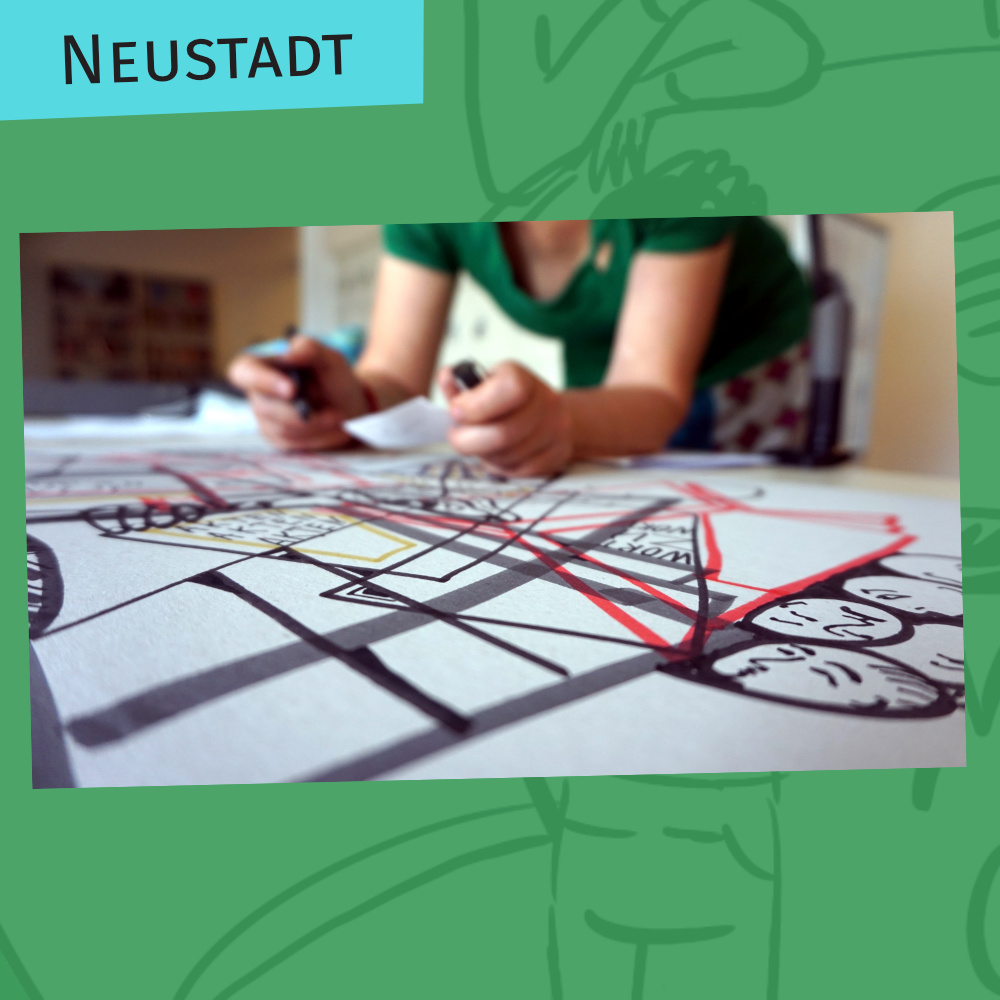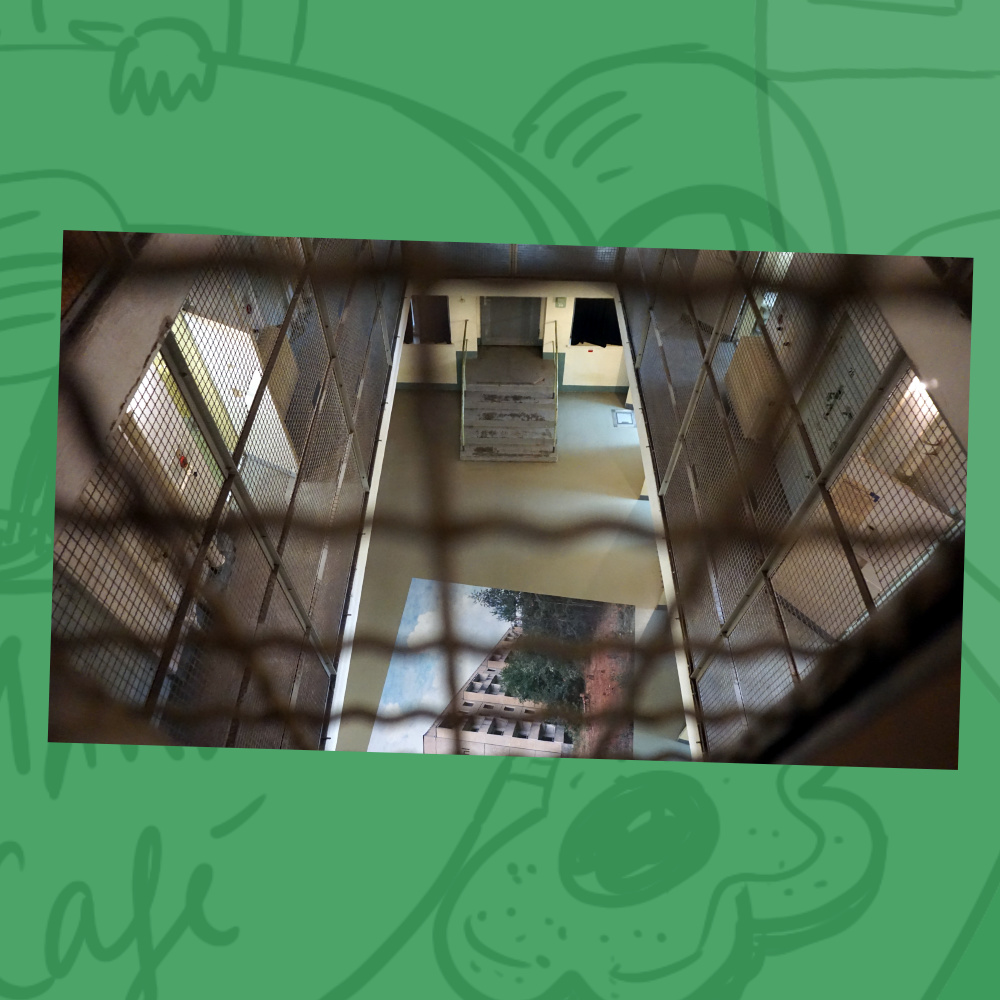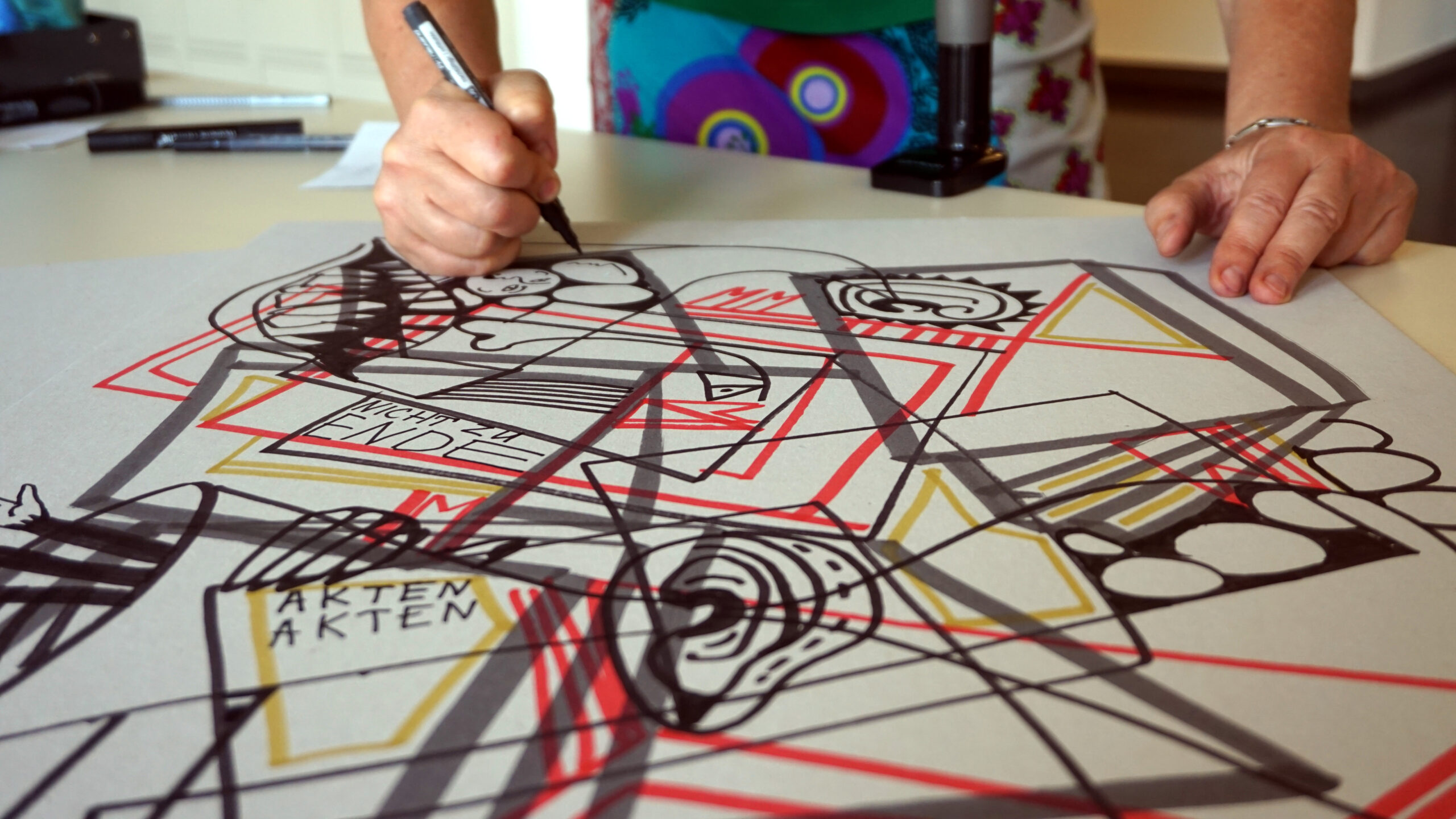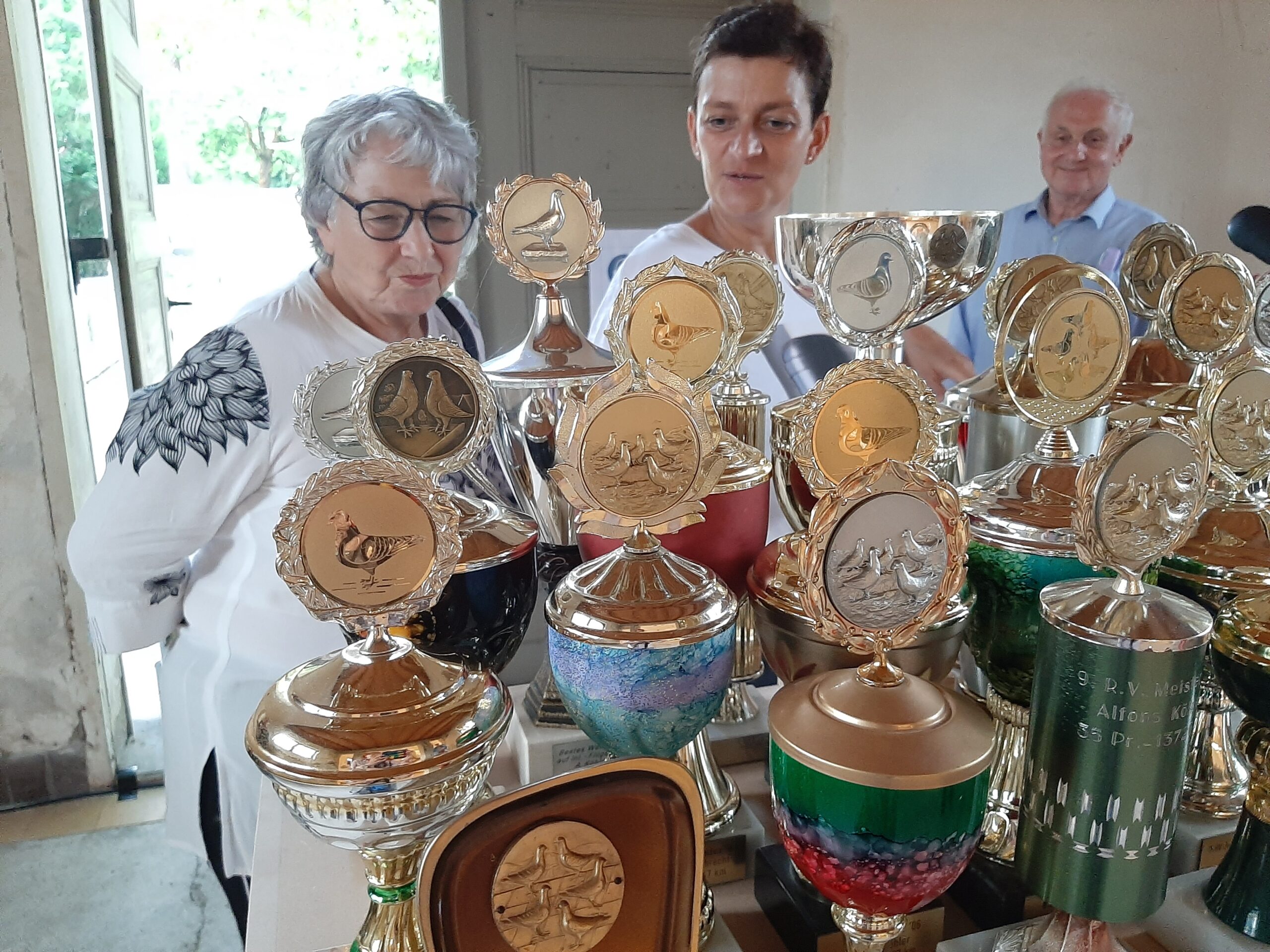The Treffpunkt ostZONE events in the Neustadt took place in cooperation with Erkenntnis durch Erinnerung e.V. / Gedenkstätte Bautzner Straße Dresden.
10.09.2021 – Market café
„The other side? Soviet era and Stasi files“ with the artist Susan Donath
Susan Donath carries an urn in – on her T-shirt. “Stasi files Donath family” is the inscription. The artist talks about her plan to “bury” the Stasi files. In her childhood she got to know the state security only indirectly, the behavior of the adults was sometimes strange. She researches and orders the files. She reads. The everyday life of the family is described in detail, the lived routine seemed to be of interest. She asks. Her family tells and yet does not tell. The next time she reads, there are suddenly redactions in the files. And not all family members agree to the “release” of the files. The urn is waiting.
The artist Elena Pagel, born in the Soviet Union, listens to Susan. She knows the strong state from her childhood and youth. The café guests talk about their experiences and ask questions. What does it mean to “have” a Stasi file? And who actually watched the Soviet soldiers? Elena Pagel makes what she hears visible on the canvas.
Susan Donath: Photo urn and T-shirts with printing and inscription
“For the market café “The other side? Soviet era and Stasi files” we had planned that, after a short introduction to the Bautzner Straße Dresden Memorial, I would tell about how I came to my artistic work in the context of dealing with Stasi files. This artistic work is closely linked to the biography of my parents and my own. From the stories about the biographies and the creation of the work, a dialogue developed with the participants, who shared their perspectives and biographies. For me, the sharing of perspectives was very intense because it allowed me to see and experience history through other people’s eyes. I am very grateful for that.” (Susan Donath)
10.09.2021 – District walk
„In the footsteps of Soviet soldiers“ with the artist Susan Donath
The expert on the culture of mourning and death, Susan Donath, shows us Vladimir Putin’s apartment building on the way from the former MfS district administration to the Soviet Garrison Cemetery, where he lived from 1985. But how and where did the other Soviet soldiers live? Passing the long barracks wall in Albertstadt, we go to the war graves site. Soldiers’ graves – fallen in the 2nd World War. Honorary graves. But many graves bear the date 1987. What did these young soldiers die of? And a child’s grave in a corner of the cemetery. With the turn of 1989/90, the soldiers leave Dresden. Susan Donath often comes here and sometimes meets a Russian family laying flowers at a grave.
Thoughtful – does home also apply to the grave – we walk to the North Cemetery. In the mourning hall we get a guided tour through Susan’s exhibition “Unverblümt”. What do the dead get out of the flowers on their coffins and graves? A lot, we realize at the latest after looking at Susan’s individually hand-strung pearl flowers.
Susan Donath: Photo gravestone and text
“We were a very small mixed group in terms of age, origin and gender. This had the advantage that we were very quickly in conversation and dialogue among ourselves. I have already given several lectures about the Soviet garrison cemetery, but I have never realized as I did in this constellation with the participants how important and urgent it is to preserve the individual gravestones. They are the last witnesses of the presence of the Soviet army and their families in Dresden. They have the potential to fill many still open gaps in history. Therefore, I decided to deal with the topic artistically after the project. Task for the participants during the walk through the district: Which sentence has stayed in your head today?” (Susan Donath)
LAST WORDS | Responses from participants
„Several times I would not have been there, a bomb exploded next to my grandfather, a bullet grazed my father’s helmet, a peace flag in white on the balcony at my mother’s house was the occasion for a sniper’s shot…”.
“So many questions still unanswered, the young men of 1952 who died … “.
“These graves here of Soviet or Russian soldiers are the only visible signs of the presence of these people here in Dresden (1945-1992)”.
“Яна Ƃорисова, born and died 1987 in Dresden“.
„This is a teardrop shape … you noticed, in Russia or Eastern Europe it is standard. I didn’t think about it before, but after your comment I started reading about what meanings the wreath shapes have in funeral floristry in Russia. Earlier in the USSR the funeral wreaths were only in teardrop shape. More recently (influence of Europe, apparently) there are also heart and circle shapes. Wreaths in oval or teardrop shape are a symbol of sorrow, sadness and suffering of the heart and soul … “
„Thank you for this insight and conversation with and in the group. You have allowed me to share in something.
Names, their stories, their biographies.“
The project Treffpunkt ostZONE. Remember and Shape is funded by the House of Resources Dresden +. This measure is co-financed with tax funds on the basis of the budget passed by the Saxon state parliament within the framework of the state program Integrative Measures.













